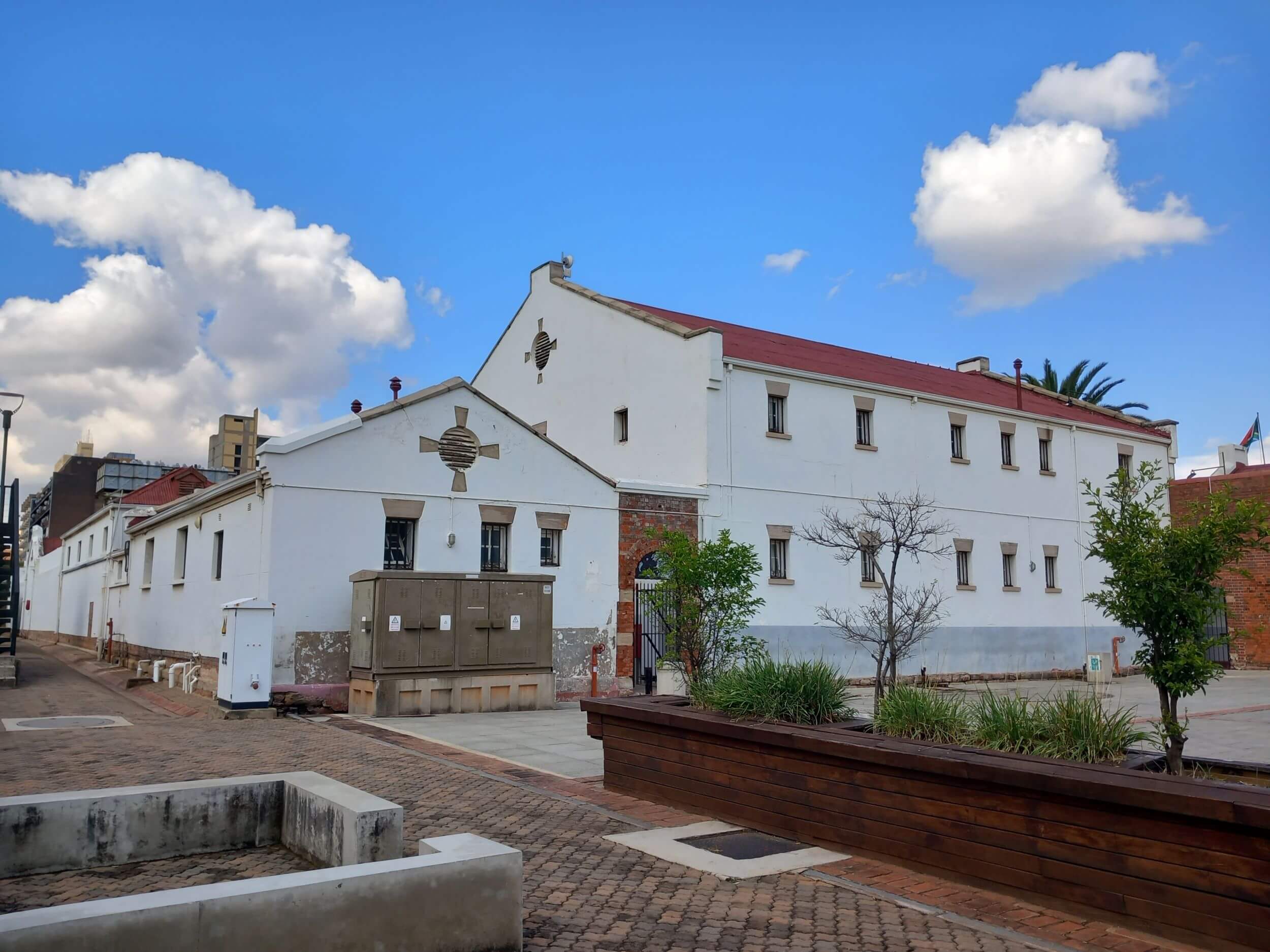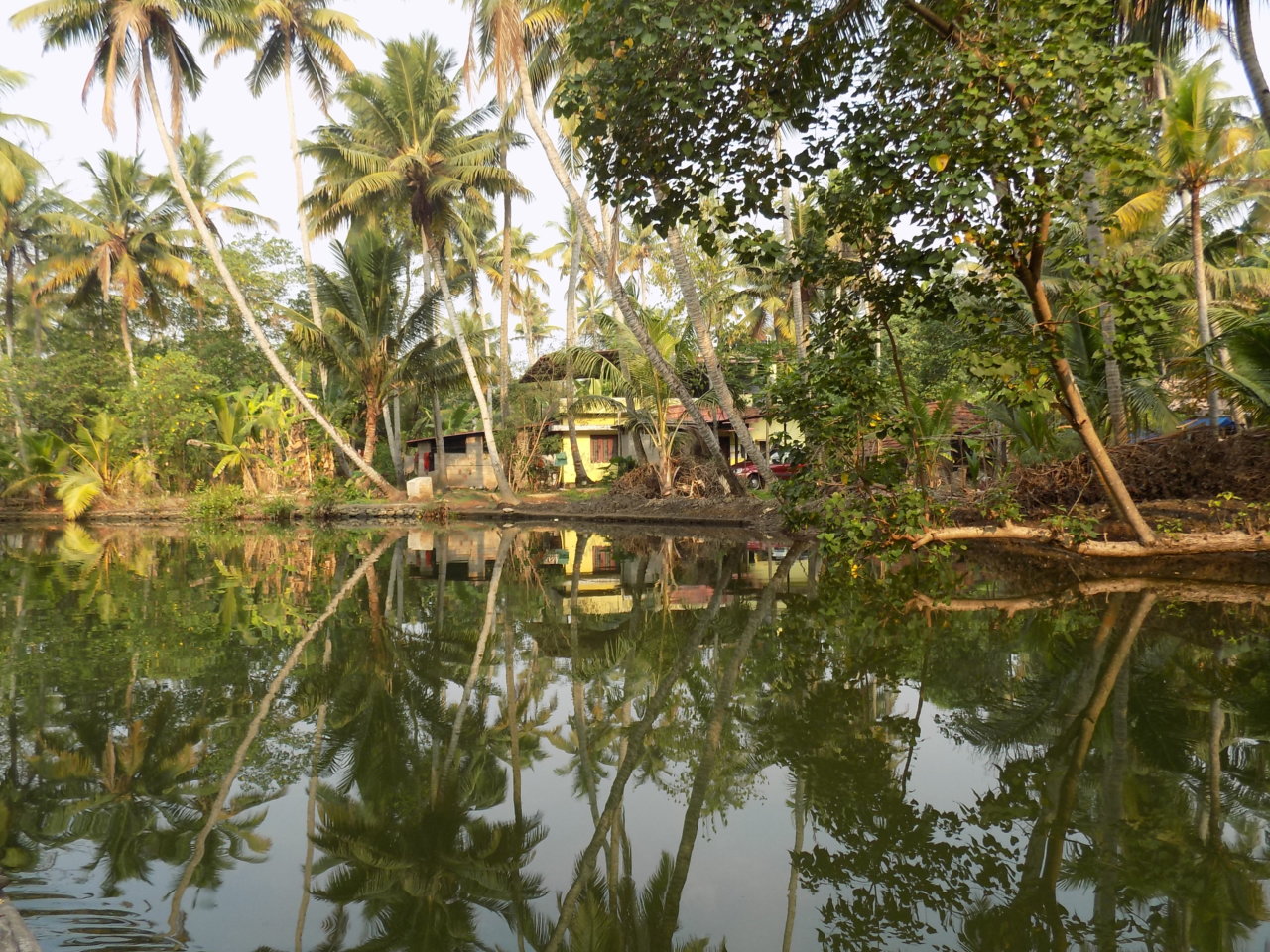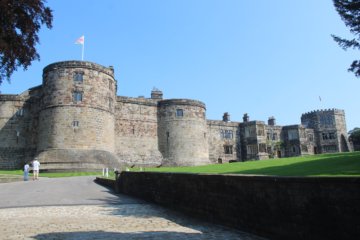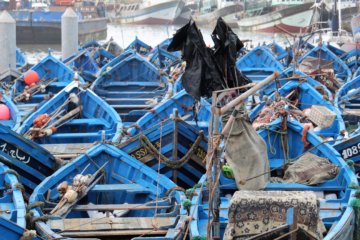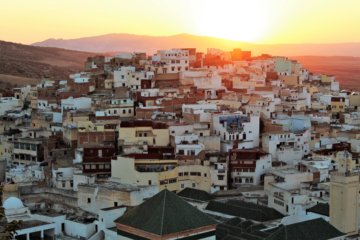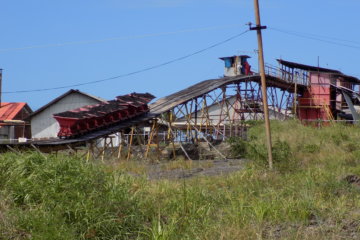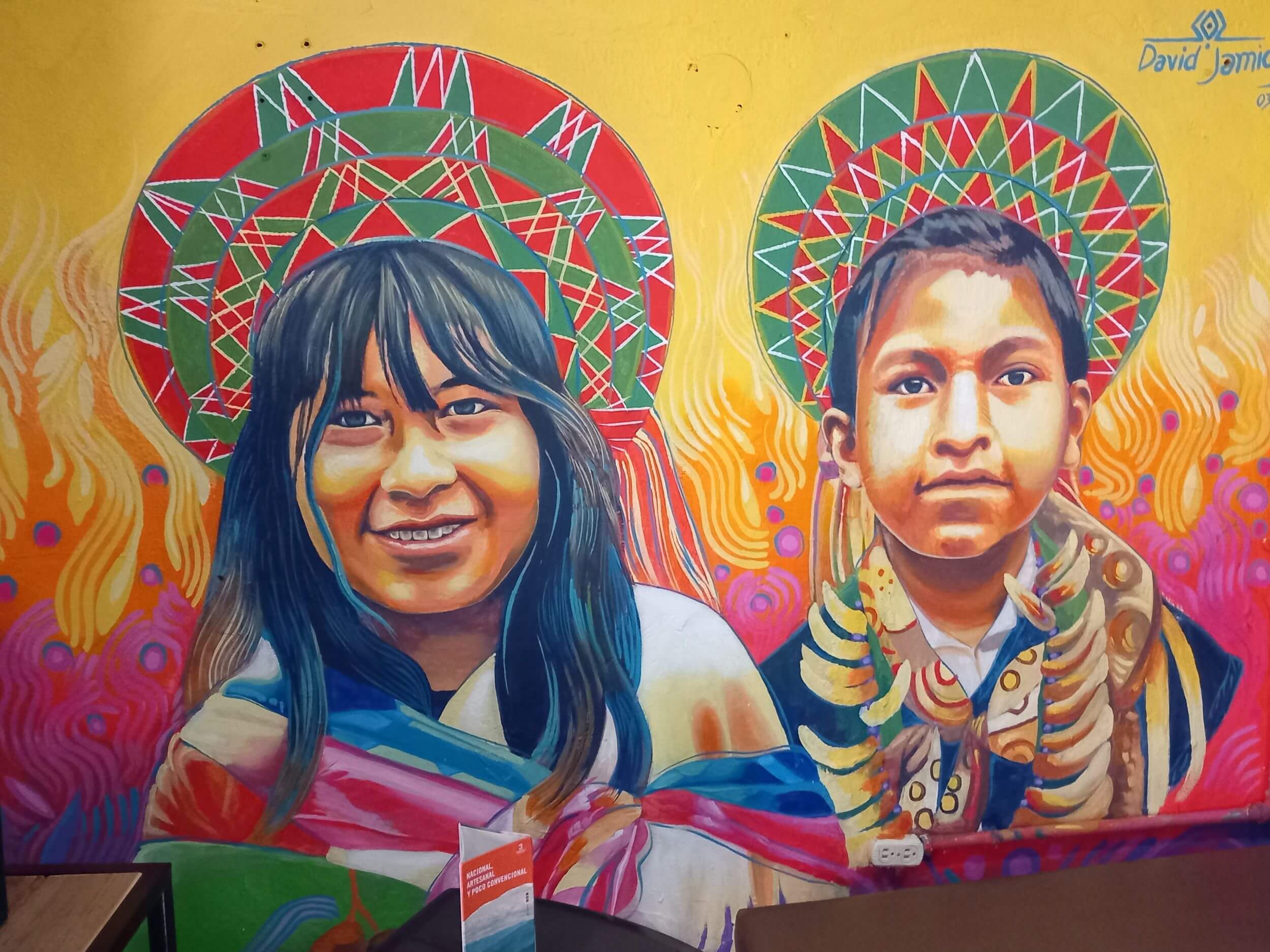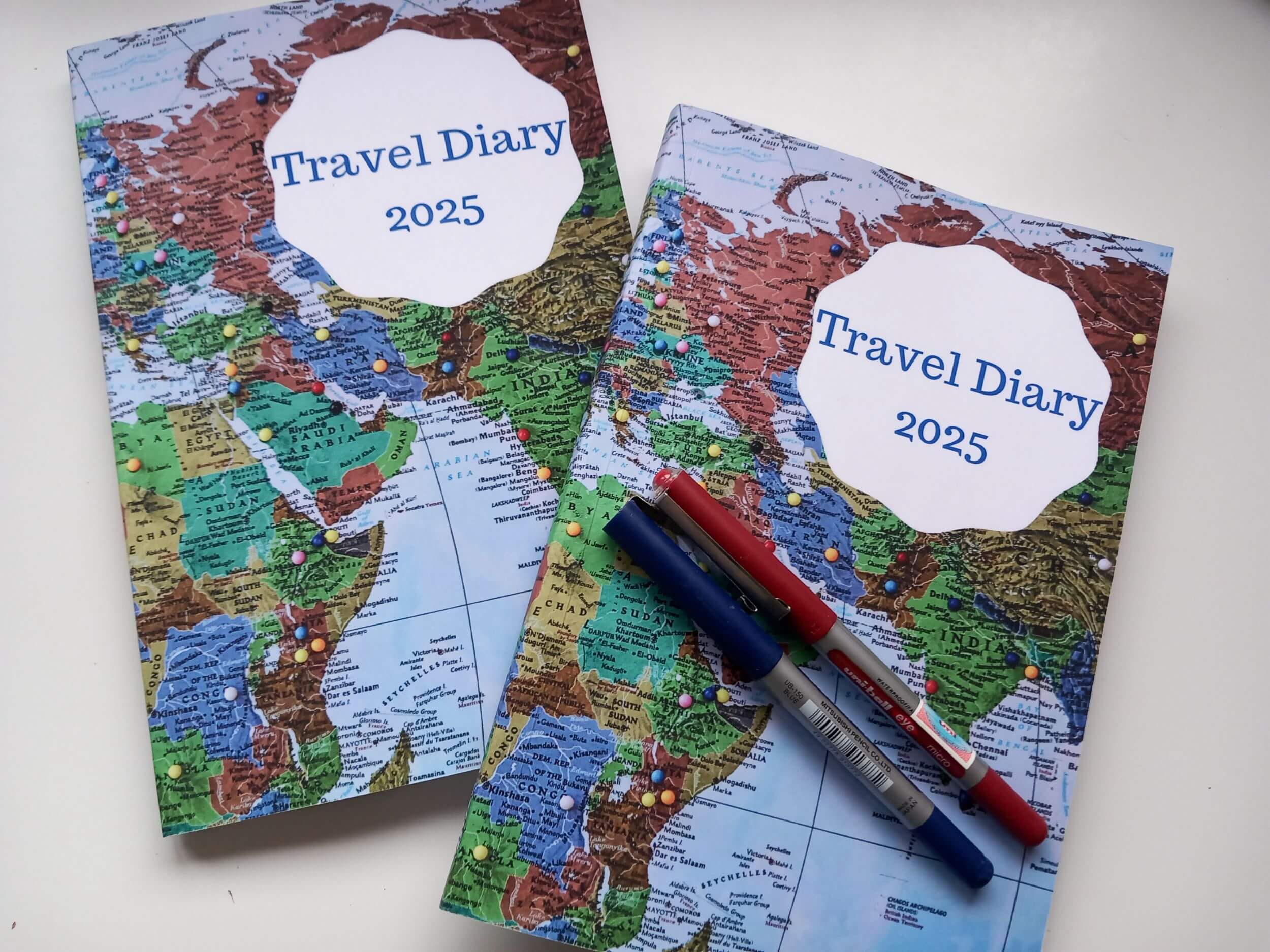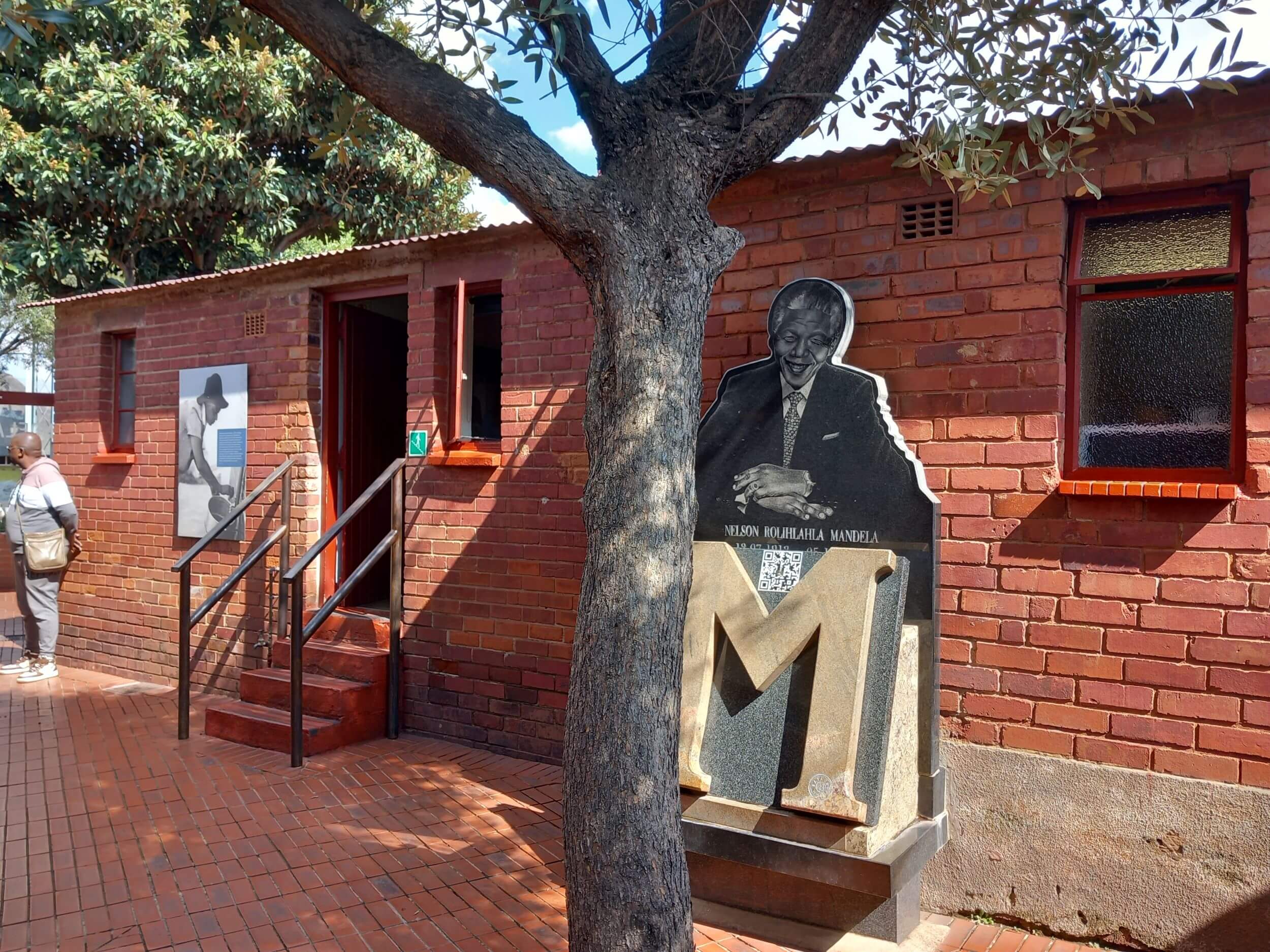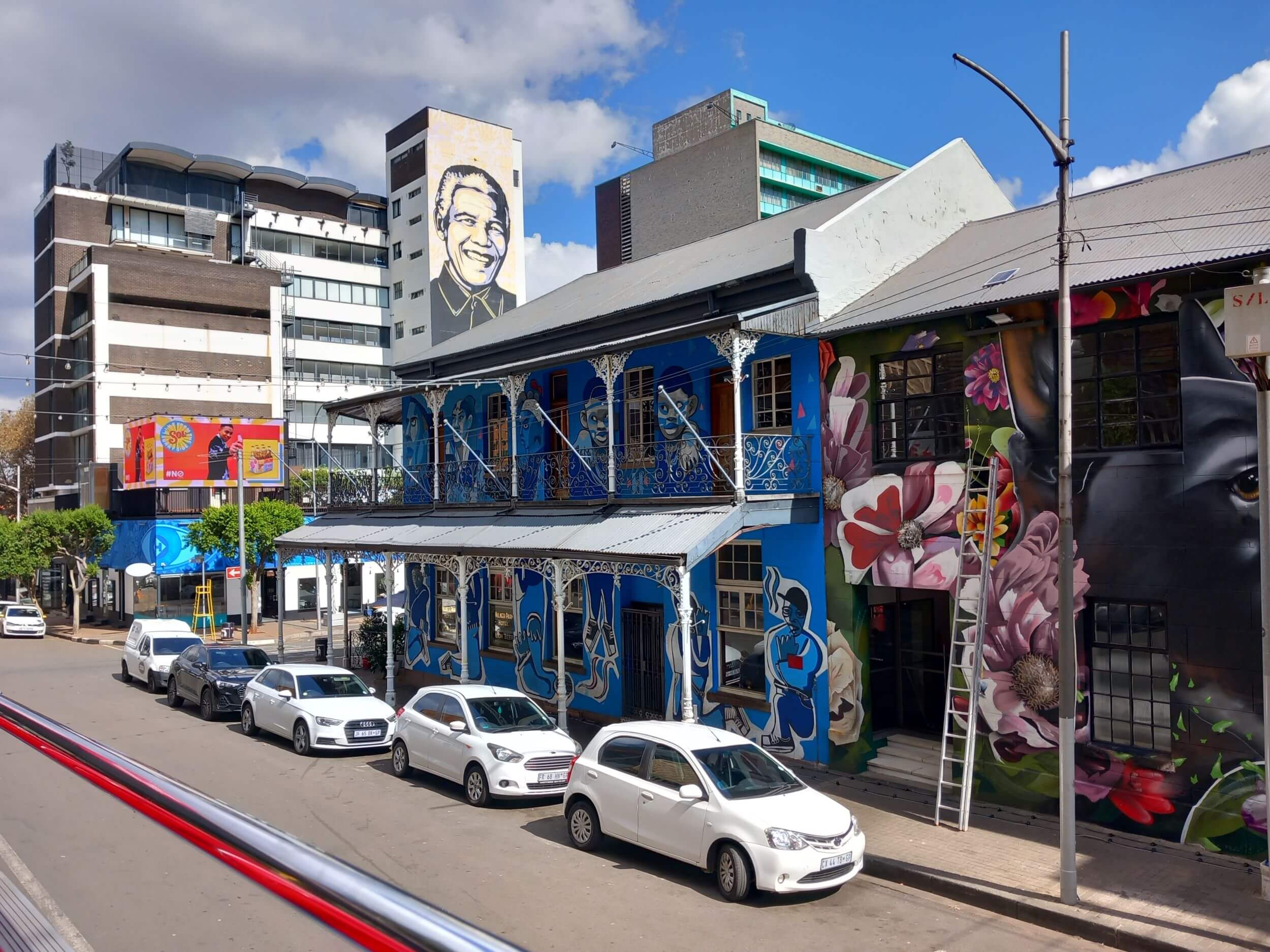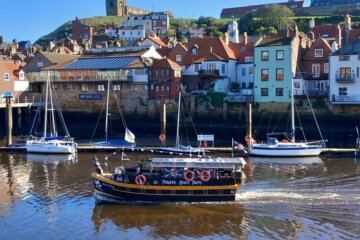Located in the heart of Johannesburg, Constitution Hill precinct is a living museum that tells the story of South Africa’s journey to democracy. It is one of the best things to do in Johannesburg and is accessible by the city’s Sightseeing Bus. The site is a former prison and military fort that bears testament to South Africa’s turbulent past and, today is home to the country’s Constitutional Court, which endorses the rights of all South Africans. It is an unmissable world-class heritage tourist attraction.
The only way to understand Constitution Hill is to take advantage of one of the free guided tours that take place throughout the day. Our tour guide was interesting and informative. We came away with a much greater understanding of the place and its history.

In this article
Number Four Prison
The starting point for our tour was ‘Number Four’, the prison for blacks, which, unbelievably, given the state of it, was in use until as recently as 1983!

Prison conditions
Conditions for black prisoners were grim. Men were incarcerated in communal cells designed for 30 prisoners, but which regularly housed as many as 60. They only had thin sleeping mats and blankets, and space was so limited that prisoners had to sleep head to toe. There was just one toilet in the corner of each of these cells.
Cruelty and humiliation were the standard behaviour of prison warders. The few black warders were treated almost as badly as the inmates by their white colleagues.
No distinction was made in terms of the ‘crime’ a man had committed. A black man arrested for not carrying his pass could be jailed without trial and accommodated in a cell with common criminals like murderers and rapists.
Prison diet
The prisoners’ diet depended on their race. Black inmates had to survive on very little. There were no chairs or tables, so the men had to eat their meals squatting on the floor in an open area next to communal toilets, which regularly got blocked and overflowed. Disease was rife.
Punishment inside prison
There were a large number of isolation cells to punish inmates who were deemed to have broken the rules. Political prisoners were housed in these as a matter of course. These airless, dark, tiny cells were supposed to be used for a maximum of 30 days of solitary confinement at a time, but some men were held in them for over a year.
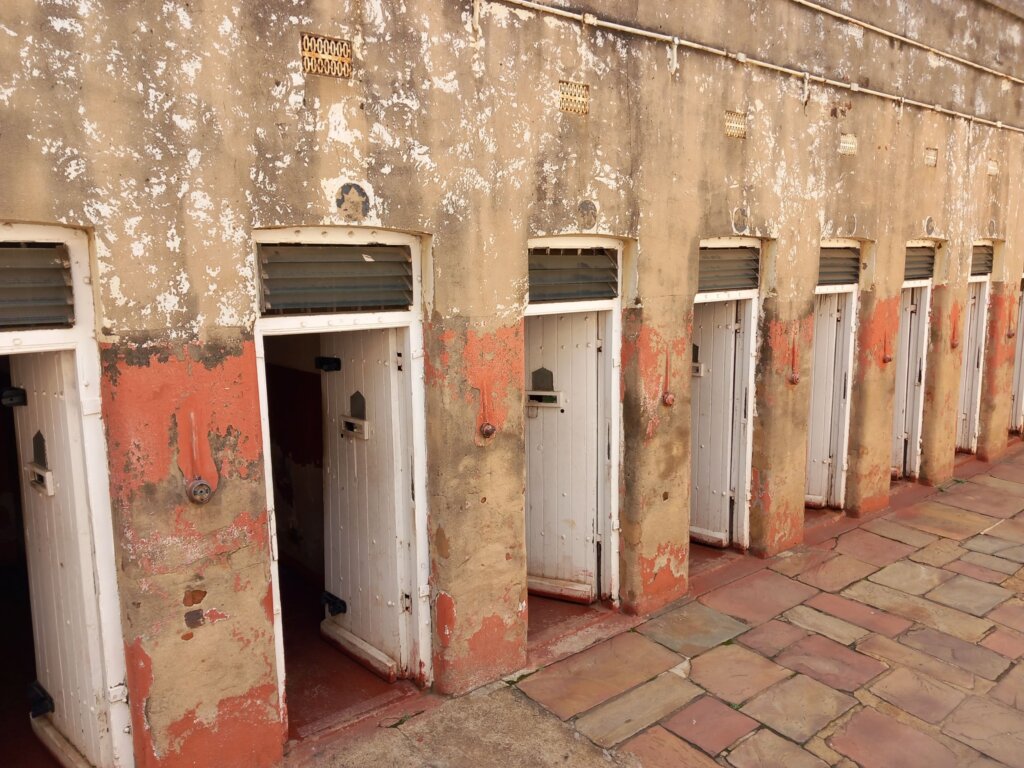
Prison entertainment and activities
Unbelievably, despite the grim conditions, prisoners found ways to entertain and occupy themselves. Singing was always popular, as was ‘blanket sculpture’, creating artwork by folding and shaping blankets. There is an exhibition today to show examples.
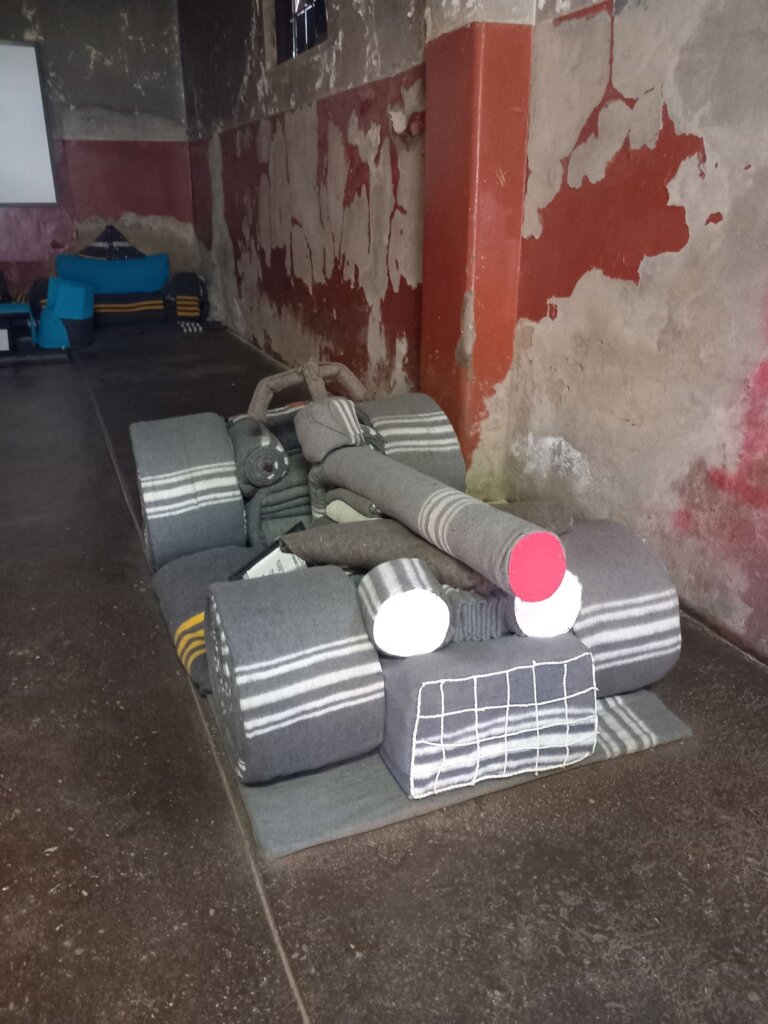
Famous inmates
Number Four was once home to prisoners such as Mahatma Gandhi (jailed several times between 1908 and 1913 for leading the Passive Resistance Movement against pass laws for Asians), Joe Slovo, Robert Sobukwe, and the students of the 1976 Soweto uprising.
Constitutional Court of South Africa
Our tour of Constitution Hill continued with a visit to the Constitutional Court of South Africa which is housed in a purpose-built building next door to Number Four. This is the highest court in South Africa and represents the rights of all citizens. During its construction, the notorious holding prison where accused men were held while awaiting trial was demolished. Part of it was kept and incorporated into the state-of-the-art court facility. Red bricks from the demolished prison were used in the new building. They can be seen clearly in the courtroom.
The design of the court
The building is very cleverly designed. Inside the main room, a row of horizontal windows has been set up behind the judges’ seats. While the windows are at head height on the inside, they are on ground level on the outside. Those sitting in the court consequently have a view of the feet of passersby moving along, above the heads of the judges, to remind them that in a constitutional democracy, the role of judges is to act in the interests of the people of the nation, rather than in their own self-interest.
The Constitution of South Africa
11 judges rule on constitutional matters. The Prime Minister appoints them for a 12-year term. When they reach their 70th birthday, they must retire. There is a cow hide displayed in front of each of their chairs, an acknowledgement of the traditional ways of justice as practised in rural villages. Similarly, the emblem of the court shows people discussing matters under a tree, as would have happened in rural communities. There is a South African flag hanging behind the judges’ chairs that a group of local ladies stitched by hand. It is intricately embroidered and beaded and is a real work of art.
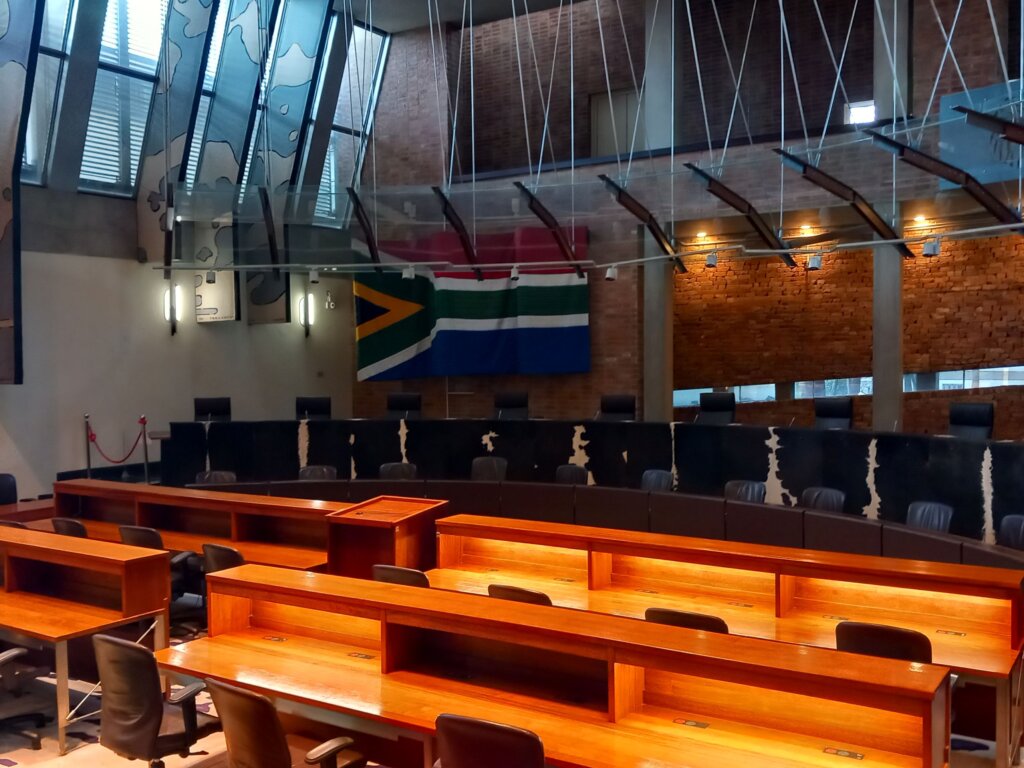
Public attendance
South Africa’s constitutional court is open to the public who want to attend hearings. The public seating is very close to the action, unlike court buildings elsewhere in the world.
The doors of the court
The doors to the court have the 27 rights of the Bill of Rights carved into them, written in all 12 official languages of South Africa. There were 11 official languages, but sign language was added recently, making 12 in all.
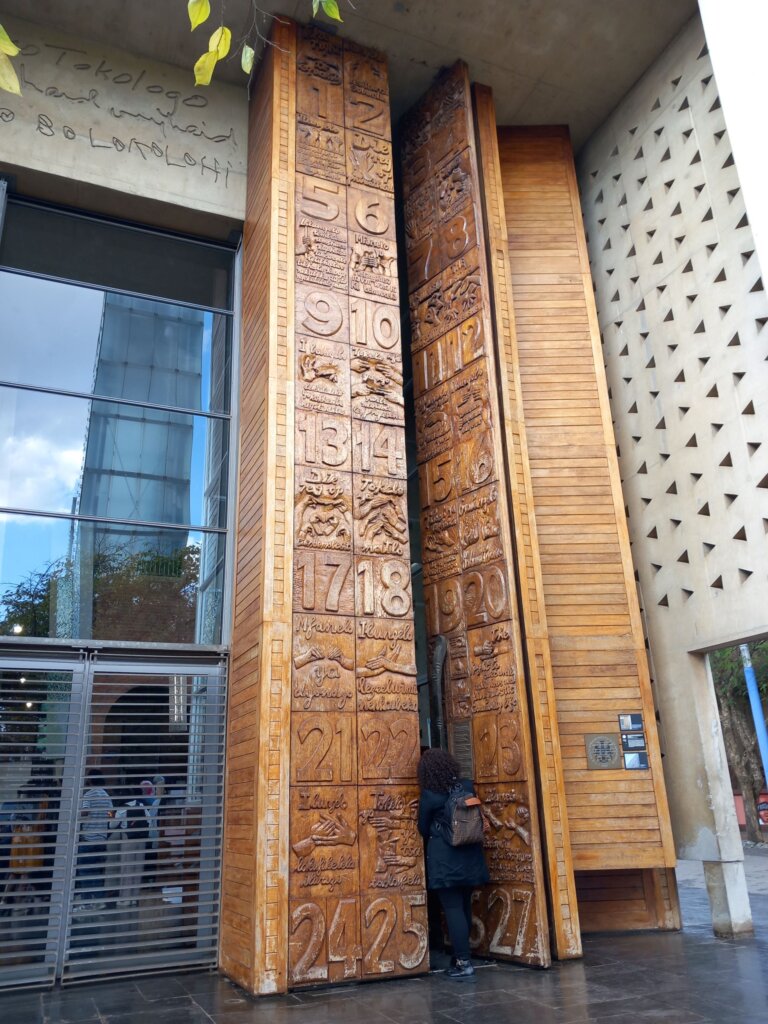
Notable laws
Amongst other notable rulings in this court, the death penalty was abolished in 1995, and same-sex marriage was recognised in 2006.
Art collection
In the court atrium, there is an impressive art gallery that houses a collection of more than 200 contemporary artworks.
We were very impressed with the court building. There are lessons for all of us to learn here.

The Women’s Jail
From the Constitutional Court, we walked up to the women’s gaol, built in 1909 in the Victorian style.
On the way, we passed the Flame of Democracy and a statue of a child representing hope.


The prison layout
The prison had separate sections for whites and other races. The white prisoners were given better treatment compared to other races who were crowded in their cells with inadequate sanitary conditions.

Notable inmates
Some of the notable prisoners who were once imprisoned here include Winnie Madikizela-Mandela and Albertina Sisulu, both political activists who were arrested for their activities with the African National Congress during the apartheid era.
In 1932, Daisy de Melker, who poisoned her two husbands and her son, was imprisoned here. She was later convicted for murder and executed by hanging.
In 1983, the jail closed, and the building was later converted to a women’s centre.
The Old Fort
After the women’s jail, we went to visit the site of the Old Fort.

The original prison on Constitution Hill was built to house white male prisoners in 1892. The Old Fort was built around this prison by Paul Kruger from 1896 to 1899 to protect the South African Republic from the threat of British invasion. Later, when the British won the Anglo-Boer war, Boer military leaders were imprisoned here by the British.

Whites-only prison
Under the apartheid government, only whites were held in the Old Fort prison buildings, except for Nelson Mandela. He was kept there after the government received a tip-off regarding an escape attempt. Mandela was given a bed in the hospital section as an awaiting-trial prisoner in 1962 before the Rivonia Trial.
Exploring the fort and seeing another place associated with Nelson Mandela was fascinating.
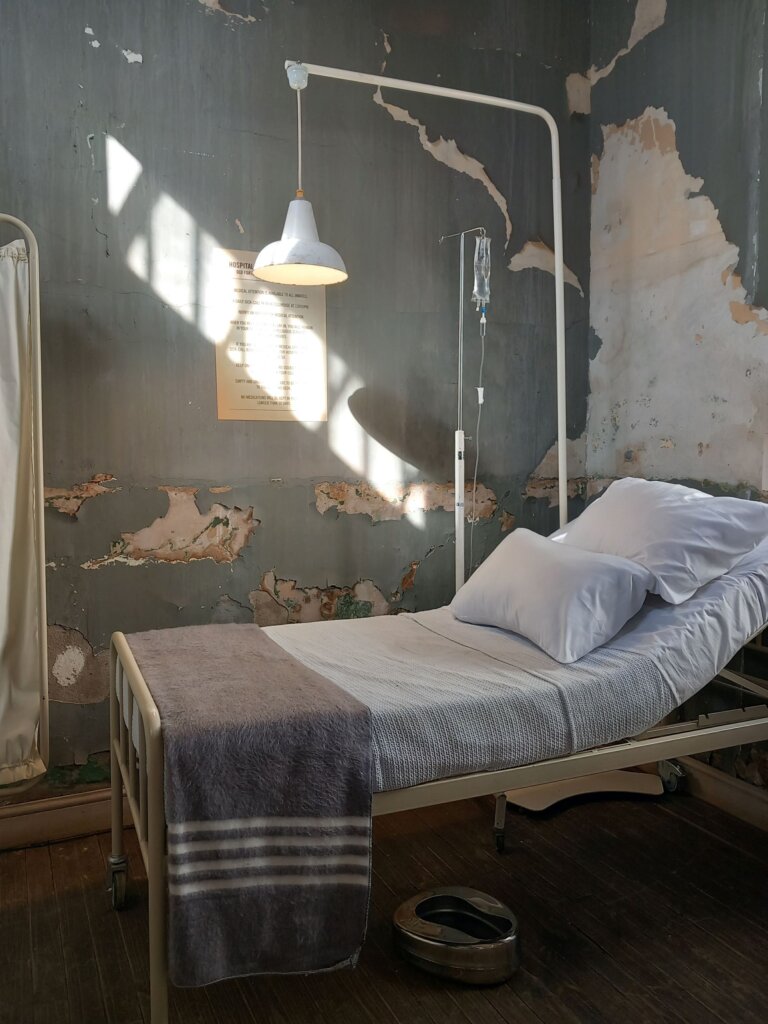
Gandhi-Mandela Exhibition
Before we left Constitution Hill, our last stop was at the Gandhi-Mandela exhibition, which draws parallels between the lives of the two men.

Watch this Video about Constitution Hill
If you’re travelling soon, please use these links!
Are you travelling soon? Use these links when making your bookings. These are the companies we use. It won’t cost you any extra, but we will earn a few pennies to help keep Happy Days Travel Blog going. Thank you!!
- Book your travel insurance with World Nomads. If you are a digital nomad or long-term traveller, try the specialist provider SafetyWing. (Never leave home without protecting yourself, your trip and your belongings!)
- Book your flight with Skyscanner
- Book your accommodation with Booking.com
- Book a tour with Tour Radar
- Book city tours and activities with Viator or Get Your Guide
- Check out our Resource Page for more companies we recommend.
Disclosure: This post contains affiliate links. If you click through for more information, or to make a purchase, it may result in a small commission coming my way. Please note that there is no extra cost to you associated with this. Thank you so much for supporting my site.
Join our mailing list

Sign up to receive our monthly newsletter. Keep up with what we're doing and be the first to receive special offers and insider tips.

